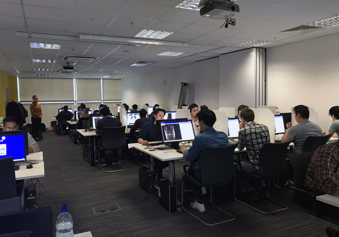FRCR Part 2A (Radiology) - CR2A - purpose of assessment statement
LEARN MOREThe various components of the Fellowship of the Royal College of Radiologists (FRCR) examinations have been designed to assess the knowledge and skills of clinical radiology trainees as they progress
through a number of levels of competence and to demonstrate readiness to progress to the next stage of training.
The award of the FRCR indicates that the candidate has attained the required level of competence across the components of the core curriculum. The Final FRCR 2A Examination is the final written
examination in general clinical radiology.
The Final FRCR Part A Examination assesses knowledge of the pathology, imaging techniques, congenital abnormalities and radiological findings that underpin clinical radiology practice. As the knowledge assessed in this examination is essential to clinical radiology practice, this examination must be completed during core clinical radiology training (ST3 - ST4). The examination assesses the summary of broad based clinical experience consistent with 2 complete years of general clinical radiology training.
The purpose of the Final FRCR Part A Examination is to assess whether those undertaking specialty training in clinical radiology have an appropriate knowledge of the sciences that underpin clinical radiology including physics as applied to imaging including molecular biology, medical statistics, radiological findings in pathological and normal conditions together with their differential diagnosis, management pathways, and radiological interventions.
Candidates who succeed in this examination have demonstrated their:
- Understanding of the appearances of normal anatomical variants in all imaging modalities.
- Understanding of the use of all imaging modalities and techniques to diagnose pathological conditions. Understanding of how to optimise imaging protocols to improve the visualisation
of pathologies. - Knowledge of the safe, appropriate and effective use of drugs and contrast agents to optimise imaging and to treat common conditions (including those related to drug and contrast reactions as well as the complications of interventions) encountered in imaging departments.
- Statistics knowledge necessary to understand the design of trials, present and interpret data, interpret results of clinical trials, critically review and evaluate papers.
- Understanding of the appearances of pathologies in all imaging modalities commonly used for their investigation.
- Understanding of management and imaging pathways for the investigation and treatment (including the safe use of interventional radiology techniques) of pathologies.
- Extensive reading of standard textbooks with reference to the RCR curriculum and the R-ITI.
- Sufficient knowledge to undertake independent on call and to participate in the running of a general clinical radiology department.
- Sufficient knowledge to undertake independent reporting of emergency and in patient radiology examinations (with appropriate supervision and support).
The SBA question format is used because it allows the candidate to demonstrate his application of knowledge, or his synthesis and evaluation of information. The candidate has to solve problems by applying acquired knowledge, facts, techniques and rules in a clinically relevant situation. The candidate has to make judgements about information, the most likely pathology or patient management based on a set of criteria.
Our exams
Find out more about our FRCR exams in clinical radiology and clinical oncology, and DDMFR exams in dental and maxillofacial radiology.
